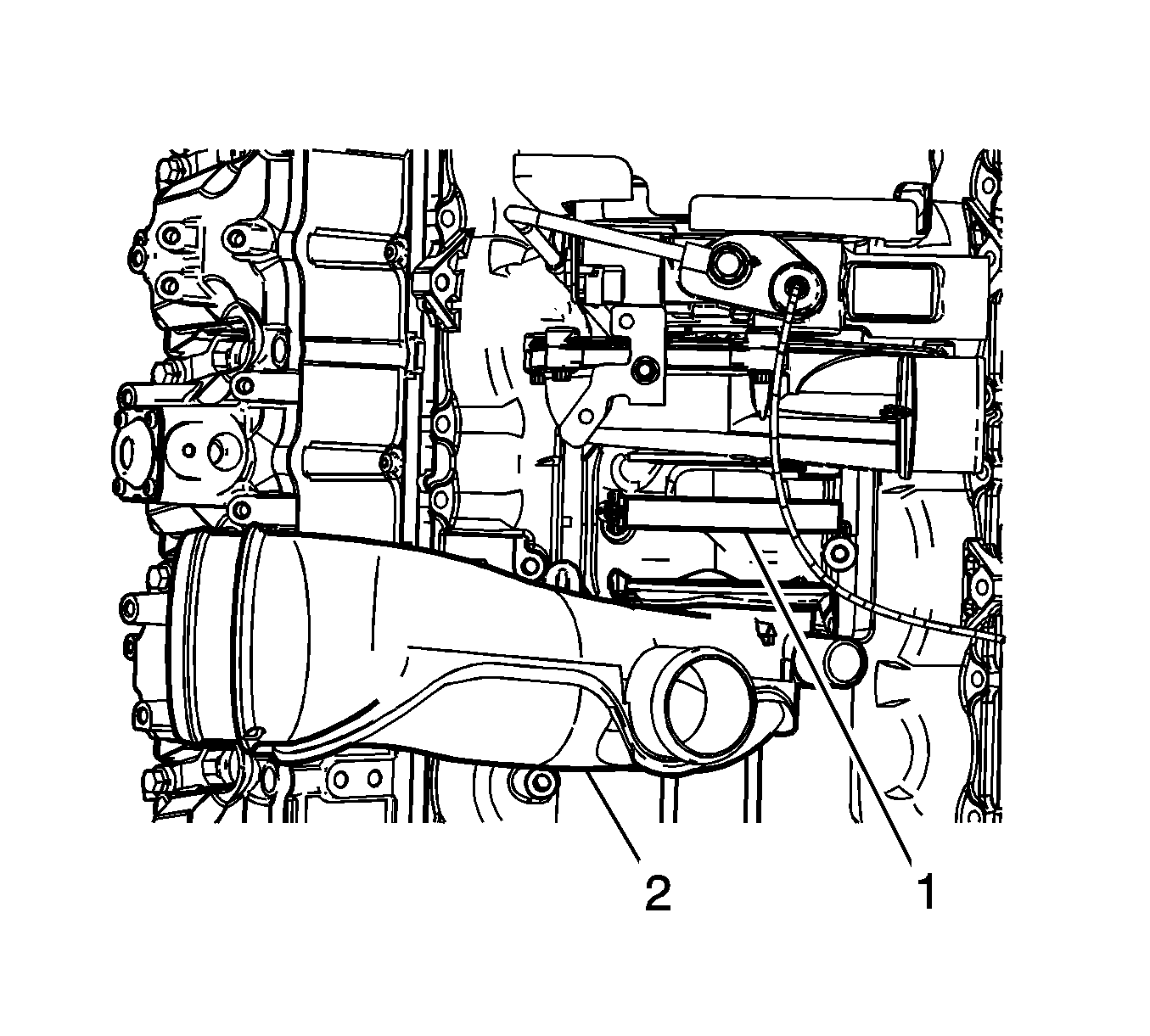Oil Leak At Turbocharger Air Intake Pipe - keywords 6.6 6.6L BQMI charge clamp cooler crankcase diesel engine inlet LMM PCV positive rear seep seepage turbo valley ventilation

| Subject: | Oil Leak At Turbocharger Air Intake Pipe |
| Models: | 2007-2008 Chevrolet Express, Kodiak, Silverado |
| 2007-2008 GMC Savana, Sierra, Topkick |
| Equipped with the 6.6L diesel engine RPO code LMM |
This PI was superseded to add engineering repair of using RTV to reseal the Intake Pipe and to add information about local dealers/FPR. Please discard PIP4372.
The following diagnosis might be helpful if the vehicle exhibits the symptom(s) described in this PI.
Condition/Concern:
A dealer may encounter a customer concern of an engine oil leak. Initial inspection may reveal a leak that looks like it is coming from the rear of the engine. The leak may actually be coming from the turbocharger inlet pipe (Air Intake Pipe). This leak may run rearwards in the intake valley making the leak seem like a rear of engine oil leak.
Recommendation/Instructions:
Complete the current SI diagnostics for any trouble codes or symptoms found. Verify the leak is coming from the turbocharger air inlet pipe. The pipe is connected to the turbo with a band type retaining clamp. See SI illustration below.

Important: Oil in the charge air cooler, hoses, turbocharger, or intake manifolds is normal with a closed crankcase ventilation system.
If the oil leak has been verified at the turbo inlet pipe complete the diagnosis below.
- Check for an overfilled crankcase.
- Verify the proper oil is being used per owner's manual specifications.
- Inspect and verify the leak is NOT from the turbocharger oil return pipe.
- Check for excessive crankcase pressure (water manometer Kent Moore tool number J-23951 or equivalent) using the current SI diagnostics for "Crankcase Ventilation System Inspection/Diagnosis."
If diagnostics were inconclusive, and a dealer has an excessive oil leak at the Turbo Air Intake Pipe, please call engineering directly. Contact information below.
Nate Hara
Cell phone
810-845-2545
If Nate does not answer please leave a short message with a phone number you can be reached at. If you don't hear back from Nate in four hours clean the sealing surfaces, apply RTV sealant, reinstall the pipe, allow the RTV to cure for 24 hrs, verify no leaks, and release to customer to evaluate the repair.
Note: Some oil accumulation on turbo inlet pipe is the result of a properly operating PCV system.
Note: Engineering does want to visit a local dealer that has a vehicle with the oil leak described in this PI. If your dealer is located within a 4 hour drive of the Detroit Metro area, and an oil leak (as described in this PI) has been verified, please contact Nate Hara before attempting any repairs.
Note: If a dealer was to encounter a repeat Intake Pipe oil leak after this repair was completed, make a field product report using the newest version of bulletin number 02-00-89-002.
Please follow this diagnostic or repair process thoroughly and complete each step. If the condition exhibited is resolved without completing every step, the remaining steps do not need to be performed.
